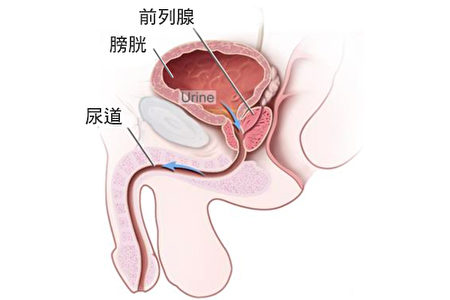Don't Ignore the Signs: Prostate Cancer Screening for Men Aged 50 or Above


Prostate cancer is common and ranks fourth among the deadliest male cancer in Hong Kong, especially affecting men aged over 50 years old. According to statistics, the incidence rate of prostate cancer has significantly increased in Asia, posing a serious threat to men's health.

The prostate, which is located below the bladder and surrounds the urethra, plays a crucial role in the male reproductive system. Its main function is to produce and secrete semen. Prostate cancer is a malignant tumour with no obvious symptoms at the early stage, therefore is easily overlooked. If left untreated, it can become life-threatening.
Therefore, it is important to know more about its symptoms, which include:
-Urinary problems
Prostate cancer may cause urinary problems such as frequent urination, urinary urgency, and pain during urination. The tumour may increase the size of the prostate, compressing the urethra and causing difficulty in urination. This occurs more frequently at night and may lead to insomnia and fatigue.
-Painful prostate
Prostate cancer can cause pain in the prostate, which may radiate to the perineum or lower back. If the pain intensifies, it may also lead to fatigue and insomnia.
-Blood in urine
The tumour may cause blood vessels around the prostate to rupture, leading to blood in urine, also commonly known as “haematuria”.
-Enlarged prostate
The tumour may change the size of the prostate and compress the urethra, leading to difficulty in urination. This condition is commonly called benign prostatic hyperplasia.
-Sexual dysfunction
The prostate plays a crucial role in the male reproductive system. If prostate cancer affects the function of the prostate, it may lead to problems with erection or ejaculation.
If you experience the above symptoms, seek timely medical attention and receive the necessary tests instructed by your doctor. Common tests for prostate cancer include:
-Prostate-specific antigen (PSA) Test
PSA is a protein produced in the prostate cells. Its level is usually related to the prostate size and the incidence rate of prostate cancer. So, measuring the PSA level can help diagnose prostate cancer.
-Digital prostate examination
The doctor will insert a finger into the anus to check the prostate’s size, tenderness and shape. This is a simple yet effective test.
-Prostate ultrasound
Prostate ultrasound is a non-invasive diagnostic method that uses ultrasound waves to examine the prostate’s size, shape and structure.
Early detection of prostate cancer increases the chance of successful treatment. So, it is important for men aged 50 or above to get annual prostate cancer screening. If you experience symptoms of prostate cancer, seek medical attention as soon as possible.
Related Brands



